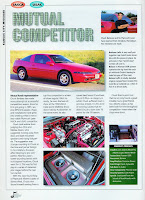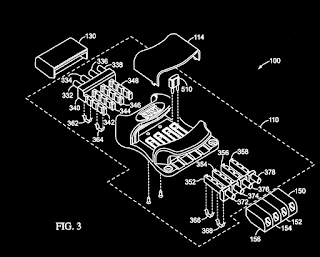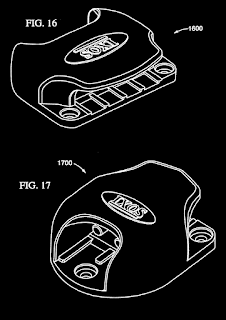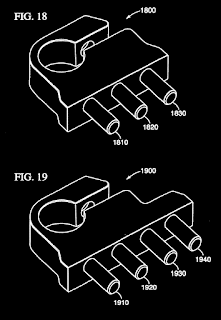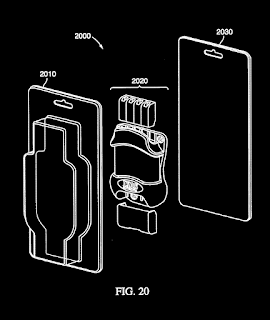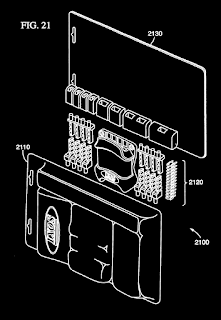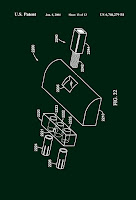 As for the inwall cables suggested by many online YouTubers, they are absolute garbage. The grain, dryness and muddiness would drive me nuts in a second of listening. And that says nothing for the un-holographic (read flat) stage. Still, I know that these cheap CL2 inwall wires would be enough for many. Not me, though. I can pick even small differences immediately. I have done it double blind and in public. But I could be called an expert and most listeners are not. In either case, my hearing was just as good before I had my first speaker. And as a reference, women hear better than men too. Nonetheless, many will not appreciate the difference; specially using any mid-fi speaker with 12dB/Oct crossovers and no time alignment.
As for the inwall cables suggested by many online YouTubers, they are absolute garbage. The grain, dryness and muddiness would drive me nuts in a second of listening. And that says nothing for the un-holographic (read flat) stage. Still, I know that these cheap CL2 inwall wires would be enough for many. Not me, though. I can pick even small differences immediately. I have done it double blind and in public. But I could be called an expert and most listeners are not. In either case, my hearing was just as good before I had my first speaker. And as a reference, women hear better than men too. Nonetheless, many will not appreciate the difference; specially using any mid-fi speaker with 12dB/Oct crossovers and no time alignment.If you really want to give a shot at listening to the differences in wires, find a dealer that sells fine and less expensive speakers like the Vandersteens and match them with as few electronics as possible (more electronics means more distortion). Then compare wires. Be ready to regurgitate after listening to the Monsters.
If you really want to try an exceptional set of cables at a very low price, get 50 pair phone wire. This is a recipee that I learned from Chris and Melissa Owen and which I used in most of my competition cars over the years.
 At about $1.50 per foot, the ending wire (from tying all negatives together and all positives together for a single channel run) is somewhere larger than 7 gauge. That will be enough to carry as much current as any amplifier can put out. You will also get a litz wire (not stranded means no grain in the music). Also, the jacket around each conductor is so thin that it means much less dielectric loss without paying for expensive teflon. The wire will be a little on the capacitive side (parallel to the output) which is not safe for tubes or low impedance-output amps (cheap receivers). Thankfully, this will be balanced by almost no iductance (in series with the output). Displaying a single pole reactance (combination of such capacitance and inductance) will open up the stage when compared to normal wires with a steeper roll-off. I would also remove the outer jacket and keep the bundle together with a lose plastic tie ever 6 inches instead. This should improve stage definition for those with better equipment; again, without having to pay for teflon.
At about $1.50 per foot, the ending wire (from tying all negatives together and all positives together for a single channel run) is somewhere larger than 7 gauge. That will be enough to carry as much current as any amplifier can put out. You will also get a litz wire (not stranded means no grain in the music). Also, the jacket around each conductor is so thin that it means much less dielectric loss without paying for expensive teflon. The wire will be a little on the capacitive side (parallel to the output) which is not safe for tubes or low impedance-output amps (cheap receivers). Thankfully, this will be balanced by almost no iductance (in series with the output). Displaying a single pole reactance (combination of such capacitance and inductance) will open up the stage when compared to normal wires with a steeper roll-off. I would also remove the outer jacket and keep the bundle together with a lose plastic tie ever 6 inches instead. This should improve stage definition for those with better equipment; again, without having to pay for teflon.The result is a very clean, smooth sound that takes care of the harshness found in most of the mid-fi world. The only problem is that the cables need to always be tested for continuity across the positive and negative after termination. With so many small pairs, it's easy to wire one pair backwards and that would short the amp's output and could blow it. But being careful is rewarded with fantastic sound that no cable will match below the $2,000 level. If you care to hear the difference, try these inexpensive wires. You will probably change your speakers next, as most are garbage. You will know what I mean after you experience the difference.








